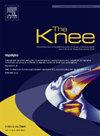Return to sport (RTS) tests and criteria following an anterior cruciate ligament (ACL) reconstruction (ACLR): a scoping review
IF 2
4区 医学
Q3 ORTHOPEDICS
引用次数: 0
Abstract
Objective
Anterior cruciate ligament reconstruction (ACLR) surgery is a common procedure to restore knee stability and enable athletes to return to sport (RTS). This scoping review aimed to explore RTS tests and criteria used in decision-making following ACLR surgery.
Methods
A scoping review methodology was undertaken. A comprehensive search of MEDLINE, CINAHL, and SPORTDiscus was conducted to identify studies reporting RTS tests and criteria for athletes post-ACLR. Studies involving level I and II sports were included. Data was extracted and study characteristics, RTS criteria, and results were summarised.
Results
Of 1703 studies screened, 33 met the inclusion criteria, involving over 6000 participants. RTS criteria showed significant variability across studies, with protocols emphasising limb symmetry indexes (LSI) for strength and jump and hop performance, often set at ≥90 %. RTS timing ranged from a minimum of six to nine months post-surgery. While psychological readiness was frequently reported, assessments of change of direction, agility, and biomechanics were less common.
Conclusions
This review highlights the lack of standardisation in RTS protocols, leading to inconsistencies in clinical practice. Developing consistent, evidence-based guidelines is essential to enhance RTS outcomes, minimise re-injury risk, and optimise performance for athletes post-ACLR.
前交叉韧带(ACL)重建(ACLR)后恢复运动(RTS)测试和标准:范围回顾
目的前交叉韧带重建(ACLR)手术是恢复膝关节稳定性和使运动员重返运动(RTS)的常用手术。本综述旨在探讨用于ACLR手术后决策的RTS测试和标准。方法采用范围审查方法。我们对MEDLINE、CINAHL和SPORTDiscus进行了全面检索,以确定报告aclr后运动员RTS测试和标准的研究。包括一级和二级运动的研究。提取数据,总结研究特征、RTS标准和结果。结果在筛选的1703项研究中,33项符合纳入标准,涉及6000多名参与者。RTS标准在不同的研究中显示出显著的差异,协议强调肢体对称指数(LSI)的力量和跳跃性能,通常设置为≥90 %。RTS时间从术后至少6到9个月不等。虽然心理准备经常被报道,但对方向变化、敏捷性和生物力学的评估却不太常见。结论:本综述强调了RTS方案缺乏标准化,导致临床实践中的不一致。制定一致的、基于证据的指导方针对于提高RTS结果、最大限度地减少再损伤风险和优化aclr后运动员的表现至关重要。
本文章由计算机程序翻译,如有差异,请以英文原文为准。
求助全文
约1分钟内获得全文
求助全文
来源期刊

Knee
医学-外科
CiteScore
3.80
自引率
5.30%
发文量
171
审稿时长
6 months
期刊介绍:
The Knee is an international journal publishing studies on the clinical treatment and fundamental biomechanical characteristics of this joint. The aim of the journal is to provide a vehicle relevant to surgeons, biomedical engineers, imaging specialists, materials scientists, rehabilitation personnel and all those with an interest in the knee.
The topics covered include, but are not limited to:
• Anatomy, physiology, morphology and biochemistry;
• Biomechanical studies;
• Advances in the development of prosthetic, orthotic and augmentation devices;
• Imaging and diagnostic techniques;
• Pathology;
• Trauma;
• Surgery;
• Rehabilitation.
 求助内容:
求助内容: 应助结果提醒方式:
应助结果提醒方式:


